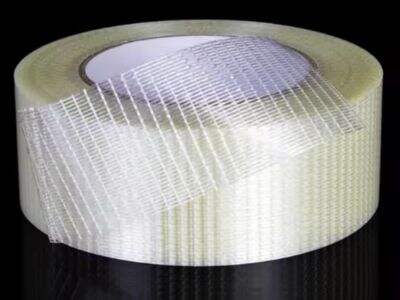For those that have never worked with filament tape. This type of tape is designed to be extra robust and tacky, which allows it hold things proper collectively. Commonly used in packing, shipping or for repairing something at home. However, one thing to keep in mind is that sometimes when you are done using it there might be a sticky mess left behind by the Filament tape. This article will discuss the reasons why filament tape can leave a glue residue and how we fix that sticky problem.
What is Filament Tape?
Filament tape consists of strong fiberglass fibers embedded into the adhesive. These strands are tough that make the tape strong and great for holding anything together. Its heavy-duty strength makes it ideal for box sealing as well as other tasks that require steadfast sticking power. Yet, there are times when you use your planned Tape filament and find a sticky film that is transferred to another part of the surface where you inserted it.
Problems with Filament Tape
While filament tape has many positives, it also comes with some negatives. The main issue is the tacky mess it leaves behind once you peel them off. This residue is difficult to remove, it can also be time-consuming as well effort demanding. Moreover, it is hard to slice through the filament tape. Its fiberglass strands are so strong that it is a nightmare to cut using conventional means. When you run out of what, you are going to have problems trying to find a way to match those lengths.
Filament Tape Cleanup
Some of the most useful methods for cleaning residue from filament tape without damaging yourself or any surface it occurs on, include: Start off by pulling the tape, if it allows you to do so. A scraper or even your fingernail will allow you to remove the tape very easily from any surface. If it does not work that well, you can utilize rubbing alcohol or vinegar instead. In about ten minutes, the sticky goo will be gone and you can just wipe it right off. However, they can also try a specialized adhesive remover product that is marked down to remove sticky stains. This will ease your cleaning job, and do it swiftly.
How to Avoid Sticky Mess?
You also have to be sure you are using the right kind of tape for whatever job you do, or else nasty sticky residue from standard filament tapes may not only leave a mark but will perfectly destroy your shrink wrapped fresh paint. For example, if the surface where you are sticking the tape is apt to become sticky choose a different type of adhesive that is less likely to make a mess. That being said, you could just use low-tack tape that is designed for delicate surfaces and will have a much lighter stick. Avoid pressing the tape down too hard when applying it. By not pressing it down too roughly later removal will be much simpler and the area won´t look like a mess.
Is It Worth It?
So, knowing more about the filament tape and its residue left behind you may be un-confident if it is necessary to use at all. Although there are some downside to Filament strapping tape because it is a sticky residue, but the thing that makes this type of adhesive so great is that it's still just as strong and useful. It can also stick things together in ways other tapes cannot. If you are doing heavy duty jobs and need a very strong, durable tape then the filament may be for you. You have to be ready for all the sticky mess that it may leave as well.
In Conclusion
Filament tape kept something together well for a long period of time, but left behind that sticky adhesive. Luckily there are a few ways to remove the residue from filament tape, like rubbing alcohol or some special adhesive removing substances. If you want to keep stickiness from getting on objects then use other types of tape or do not press down the tape too hard. Although the stickiness can be a con, filament tape is an incredibly robust and durable type of tape that proves to have many practical uses. On the next occasion you require a heavy duty tape for your work, give NewTime's filament tape a try.
 EN
EN
 AR
AR
 BG
BG
 HR
HR
 CS
CS
 DA
DA
 NL
NL
 FI
FI
 FR
FR
 DE
DE
 EL
EL
 HI
HI
 IT
IT
 JA
JA
 KO
KO
 NO
NO
 PL
PL
 PT
PT
 RO
RO
 SV
SV
 CA
CA
 TL
TL
 IW
IW
 ID
ID
 LV
LV
 LT
LT
 SR
SR
 SK
SK
 SL
SL
 UK
UK
 VI
VI
 SQ
SQ
 ET
ET
 GL
GL
 HU
HU
 MT
MT
 TH
TH
 TR
TR
 ES
ES


